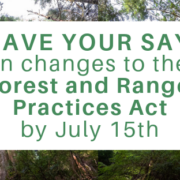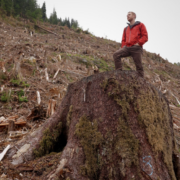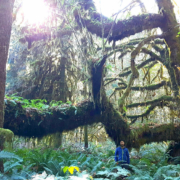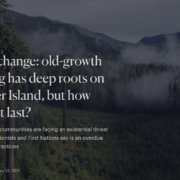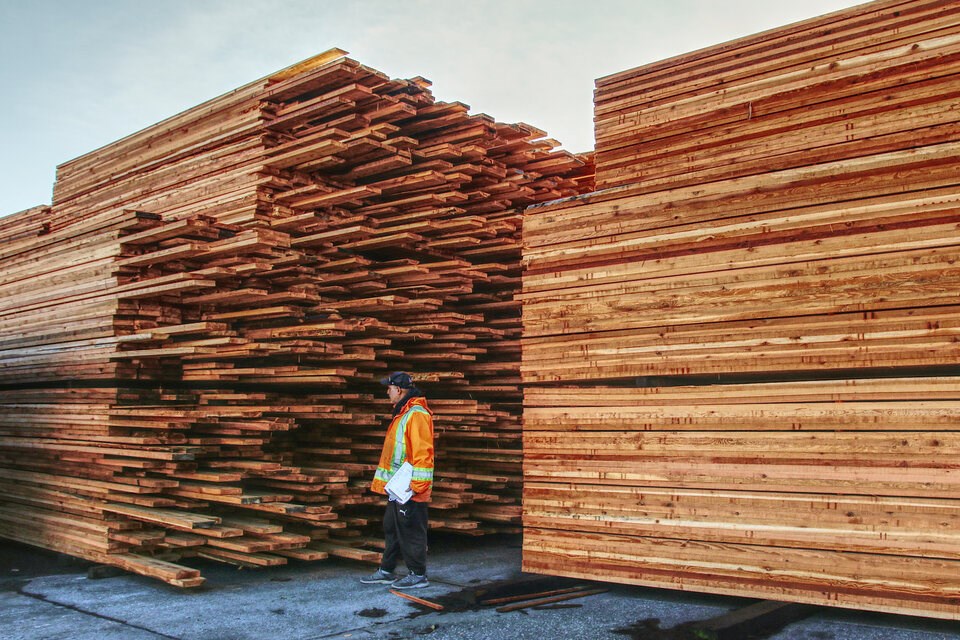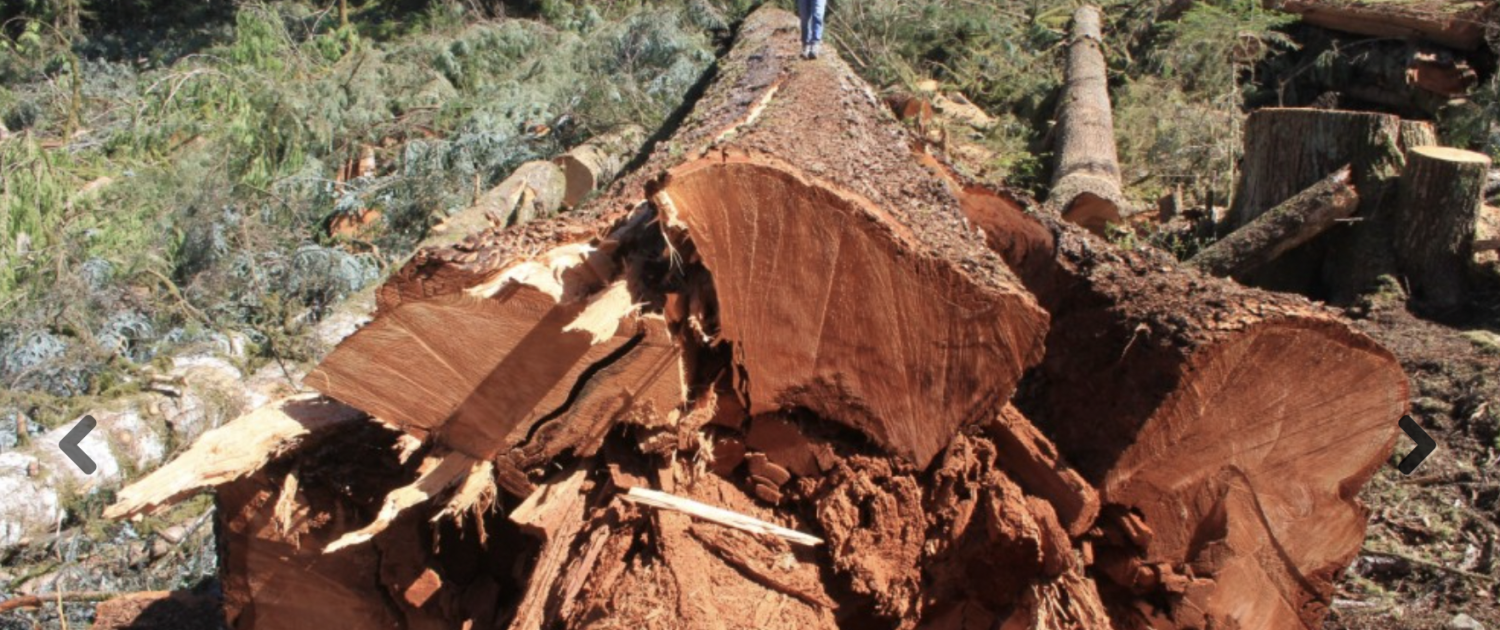 May 13 2021
May 13 2021Systemic errors in managing Nahmint’s old growth, says B.C. watchdog
Ha-Shilth-Sa
May 13, 2021
B.C.’s forestry watchdog has released a report critical of logging practices in the Nahmint valley, pointing to inconsistencies in protecting the area’s old growth forest.
On Wednesday, May 12 the Forest Practices Board released its findings, nearly three years after a complaint from the Ancient Forest Alliance sparked the investigation into old-growth logging in the valley. The independent watchdog found that forestry management standards set by the government were not met in how the Nahmint was handled by BC Timber Sales, a provincial agency responsible for auctioning off Crown land for harvesting.
Covering nearly 20,000 hectares south of Sproat Lake, the Nahmint Valley lies within Nuu-chah-nulth territory, containing old growth forest that includes some of the largest Western red cedar and Douglas fir trees in British Columbia. According to the Vancouver Island Land Use Plan Higher Level Plan Order, the Nahmint is designated as a special Management Zone. The valley is also considered one of the five “high biodiversity landscape units” in the Vancouver Island plan, a designation that sets particularly high levels of conservation for an unprotected forest.
But the forest stewardship plan that BC Timber Sales has been operating under does not adequately protect the Nahmint according to this designation, said Kevin Kriese, chair of the Forest Practices Board.
“BCTS’s FSP did not meet the legal objective, and it should not have been approved,” he said. “We looked at the remaining forest in the watershed and found there are some ecosystems that could be at risk if more logging takes place in them.”
After a 2019 field trip to the Nahmint with the Ancient Forest Alliance, plus dozens of interviews with regional experts and government staff, the Forest Practices Board uncovered a series of systemic errors in how the valley was managed by B.C. Timber Sales.
“What we found was that the district manager made an error in approving this forest stewardship plan, even though it was not consistent with the government objectives,” said Kriese.
He noted that the necessary level of site-specific planning was never done, even though the Vancouver Island Land Use Plan prioritized the Nahmint for such a detailed assessment.
“More detailed landscape unit planning was supposed to provide clear direction on how much and where to conserve old and mature forest, but that planning was never completed,” said Kriese. “BCTS was left with a complicated set of legal objectives to interpret, and we found it missed important details that are required to manage for biodiversity in the Nahmint.”
The investigation began when the Ancient Forest Alliance discovered enormous trees that were recently cut in the valley, including a few with dimensions comparable to stands listed on the BC Big Tree Registry, a public archive of the province’s largest examples of different species. A disturbed bear den was also discovered inside one of the logged old growth trees, raising concern that forestry practices in the Nahmint were below provincial standards for the area.
“With the Forest Practices Board’s investigation now complete, the evidence is irrefutable: BC Timber Sales are failing to adequately protect old-growth in the Nahmint Valley,” stated Ancient Forest Alliance campaigner Andrea Inness. “This failure exposes the gross inadequacies and lack of accountability that are inherent in BC’s forest system and the need for immediate, systemic change.”
But while the watchdog found that provincial standards weren’t met in Nahmint, logging can continue in the valley with no legal ramifications. This is due to gaps in the Forest and Range Practices Act, a legislative issue that made actions to protect the old growth forest by the Compliance and Enforcement Branch futile.
“It later asked BCTS to bring itself into compliance by amending the forest stewardship plan. BCTS stated at the time it was not required to comply with the higher-level plan order because it had an approved FSP,” explained Kriese of the failure in enforcement. “It closed the file and referred to the file to the Forest Practices Board.”
The FPB has recommended that the province conduct landscape unit planning, and to not sell any more timber in Nahmint’s “high risk ecosystems” until a more specific assessment of the area is conducted. An answer from the Ministry of Forests is expected by Sept. 15.
In an emailed response to Ha-Shilth-Sa, the ministry did not say logging will cease in the Nahmint’s high risk areas. But some measures are being taken.
“[T]he ministry if updating the Nahmint Landscape Unit Plan, adjusting Old Growth Management Areas to better capture rare and underrepresented ecosystems and biodiversity targets at the landscape level,” wrote a ministry spokesperson. “The updated Landscape Unit Plan will come into effect soon, ensuring biodiversity protection across the range of ecosystems in the Nahmint.”
Meanwhile, softwood lumber prices have reached records highs, with some species tripling in value since the beginning of the pandemic. These economic factors with undoubtably put demands on the old-growth trees within the Nahmint valley, where an average of 56 hectares have been harvested a year by BCTS since 2003, while another 22 hectares is typically cut annually by the Tseshaht First Nation under its current five-year license.
Read the original article

